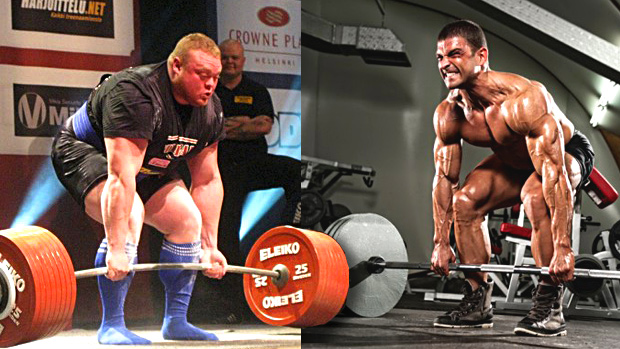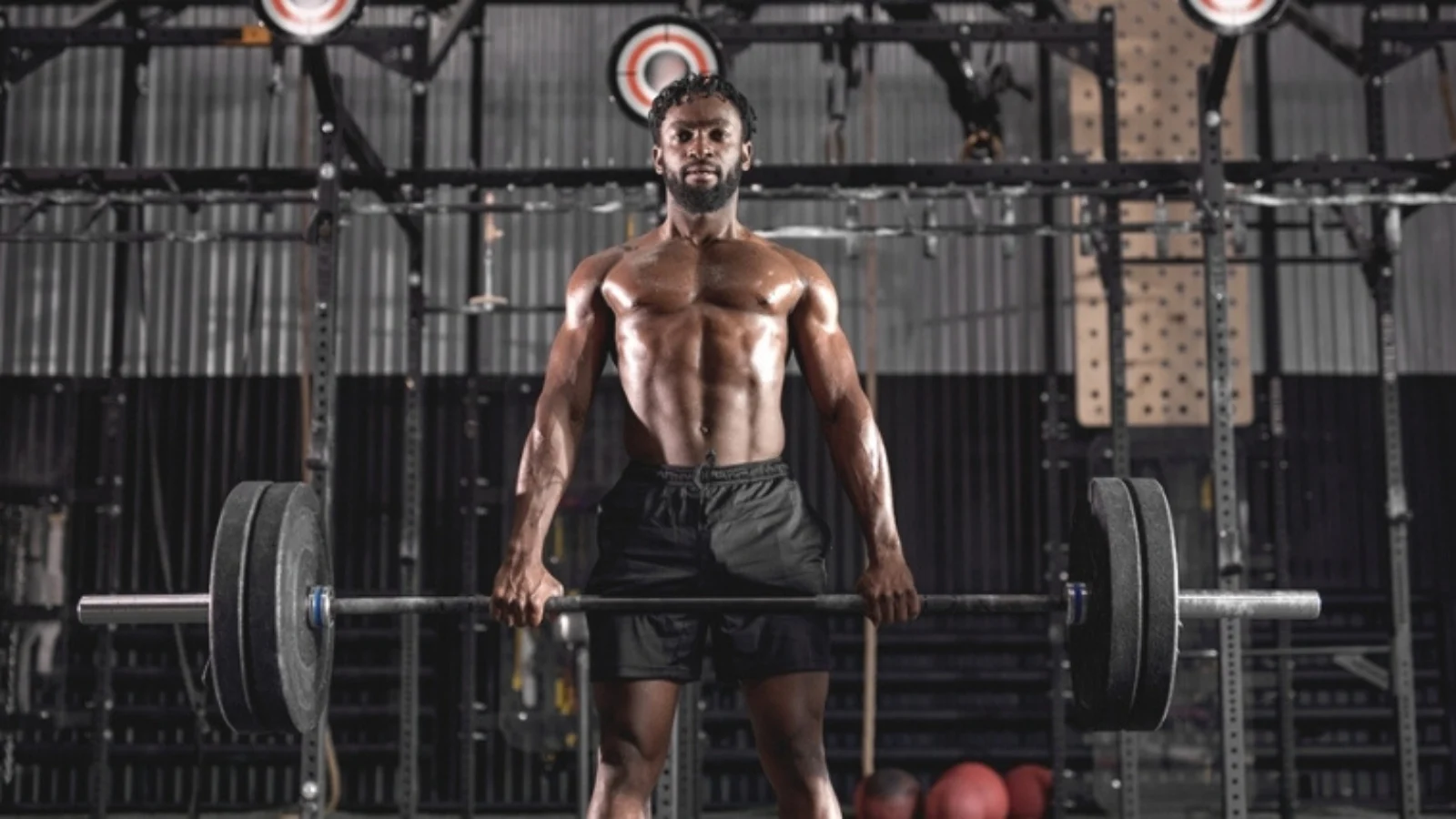Introduction to Pin Squats and Box Squats
Pin Squats vs Box Squats - Which is Better?
If you're looking for a leg workout that targets both your glutes and quads, then Pin Squats and Box Squats are two exercises that should be on your radar. Pin squats involve lifting weights from a dead stop position using adjustable safety pins set at various heights. Meanwhile, box squats focus on sitting back and lowering yourself to a box or bench before rising back up.
Here's a 3-step guide to understanding these exercises:
- Pin Squats:
- Adjust the safety bars to the desired height.
- Position yourself under the barbell in the squat rack.
- Lift the weight while keeping your spine neutral and abs tight.
- Box Squats:
- Set up a bench or box below you.
- Begin with your feet shoulder-width apart.
- Sit back like you're sitting onto an imaginary chair.
While both exercises offer excellent benefits, we almost always recommend pin squats over box squats for several reasons. Pin squats will allow for better technique adjustments due to its controlled starting position, making them ideal for improving power and explosiveness in lifters. Unlike box squats which place more emphasis on horizontal force production. Don't miss out on all that
pin squats have to offer- add them to your workout routine today! Why settle for a squat that's boxed in when you can pin your hopes on a better lift?
Reasons Why Pin Squats Are Recommended
To emphasize the importance of proper squatting form and weightlifting techniques, the article describes why pin squats are a better option compared to box squats. By incorporating pin squats in your workout routine, you can reap numerous benefits such as ensuring proper depth and form, lifting more weight, and addressing weak points in your squat.
Pin Squats Ensure Proper Depth and Form
Pin squats have proven to be effective in ensuring the proper form and depth during squats. This variation of squats is highly recommended for those who struggle to achieve the correct posture without assistance.
Here is a
5-step guide on how pin squats ensure proper depth and form:
- Select the appropriate weight for your fitness level.
- Adjust the safety pins in the squat rack to a height that allows you to reach parallel or slightly below parallel when squatting.
- Stand under the bar with your feet shoulder-width apart and grip the bar slightly wider than your shoulders.
- Keeping your core tight and chest up, lower yourself until you touch the safety pins with your glutes, then return to standing position.
- Repeat this movement for several repetitions while maintaining proper form.
In addition, pin squats enable you to focus on weaker points of your squat, including mobility issues or difficulty hitting depth. As opposed to traditional squats where users can cheat by not reaching full-depth - pin squats force one to work through sticking points and address weaknesses.
One aspiring powerlifter stated that "after months of struggling with my squat form, I tried pin squats at my coach's recommendation. Almost instantly, I noticed improvement in my technique as well as my confidence under heavier loads." Pin squats have been vital in ensuring her progress towards competing at national levels.
Pinning the weight gives you an excuse for grunting and groaning without anyone judging you.
Pin Squats Allow for More Weight to be Lifted
Pin squats offer the advantage of boosting your lifting capacity. By employing a different muscle contraction, this exercise targets specific muscles that work harder when lifting heavier weights. This results in greater overall strength and power that can be transferred to other exercises.
| Muscle Groups Targeted |
Benefits |
| Quadriceps, glutes, and hamstrings. |
Develops explosive strength, enhances muscular endurance and helps athletes overcome sticking points in squatting movements. |
One unique aspect of pin squats is the ability to stop at various points within the range of motion. This allows for specificity in training and targeting of weaker areas throughout the movement. In addition, being able to use larger loads increases the potential for building greater muscle mass.
Studies have shown that incorporating resistance exercises such as pin squats into one's training regimen leads to improvements in overall athletic performance (
Journal of Strength & Conditioning Research).
It is clear that pin squats are a valuable exercise tool for anyone looking to boost strength and power when lifting weights. With specific muscle targeting, versatility in execution and increased load-bearing capacity, pin squats are an essential component in reaching one's fitness goals.
Pin squats are like targeted therapy for your squat weaknesses, except without the awkward therapist's couch.
Pin Squats Can Help with Weak Points in the Squat
Pin squats are an effective exercise for improving the weaker spots of your squat.
Pin squats work by strengthening specific areas of your squat that require improvement. The exercise is optimal for creating muscle memory, promoting full range of motion and developing explosive power through stability.
By limiting the depth of your squat with the adjustable pins, you can train a consistent and precise starting position while focusing on what you need to improve and focus on mobility.
Pin squats
target specific muscles groups in your body that help create stability during heavy lifts while reducing strain on your joints - which are common weak points. Experts suggest doing higher reps with shorter duration to reap the benefits of this exercise, all while using safe technique.
When performing
pin squats, it is important to use proper form to avoid injury or imbalanced execution as they recruit more stabilizing muscles compared to traditional squats. Therefore, always have a spotter nearby or use a squat rack if available.
Pin squats provide a unique way to add variety into one's workout routine and give desired improvements to your overall lower body strength. According to Men's Health, professionals recommend incorporating pin squats into your training routine and execute them with proper technique, since poorly executed pin squash may risk damaging knee joints.
Box squats may be great for boxes, but they're not so great for building strong legs.
Reasons Why Box Squats Are Less Recommended
To discourage bad habits in your squatting routine, pin squats might be better than box squats. In order to provide a solution to this problem, this section explains why box squats are less recommended. The sub-sections, which include how box squats can create bad habits, limit range of motion, and may not translate to regular squats, will be discussed in detail.
Box Squats Can Create Bad Habits
Box squats can lead to problematic movement patterns as they encourage sitting back too far, leading to negative changes in posture and hip mobility. This style of squatting may also cause
decreased muscle activation in the quads and glutes, which should be emphasized during lower body exercises. To prevent these issues, try incorporating
traditional squats or other variations like split squats into your workout routine.
It's important to note that box squats can still be useful for certain individuals with specific goals or limitations, such as powerlifters with hip mobility issues. However, it's generally not recommended for beginners or those looking to improve overall lower body strength.
When performing any exercise, it’s crucial to prioritize
proper form and technique over adding weight or reps. Neglecting proper technique can result in a higher risk of injury and hinder progress over time. Don't get caught up in popular trends or exercises without properly understanding the potential risks and benefits.
Overall, while box squats may offer some benefits for certain individuals, they should be approached with caution and only incorporated into a workout routine after careful consideration of individual goals and abilities.
Box squats: the perfect exercise for those who want to limit both their range of motion and their gains.
Box Squats Limit Range of Motion
Performing Box Squats restricts an athlete's range of motion. This is because the exercise requires them to hit a box or bench, and this contact point limits their descent. Consequently, the athlete is not able to squat as low as they would in a standard squat, thus
restricting their muscle activation and strength gains.
To understand why Box Squats are less recommended, we need to delve into the exercise's mechanics. Unlike traditional squats that allow for complete hip flexion and lower extremity extension, Box Squats require a box or bench that prevents the athlete from lowering themselves past a certain point. This restriction limits muscle activation by decreasing eccentric loading on the muscles.
Moreover, performing Box Squats consistently can create muscular imbalances over time because athletes cannot focus on strengthening individual muscle fibers within their normal range of motion. Instead, it forces them to keep limited ranges of motions for prolonged periods.
Pro Tip: For athletes looking to increase leg strength through compound exercises, standard squats are preferred over Box Squats as they allow for complete neuromuscular activation in both concentric and eccentric phases.
Box squats are like the guy at the gym who only trains biceps, it may look impressive but it won't actually translate to functional strength.
Box Squats May Not Translate to Regular Squats
While
box squats have gained popularity among strength trainers, their translation to regular squats remains questionable. The primary challenge lies in the fact that box squats are performed starting from a seated position, which eliminates the eccentric phase of muscle movement. This makes it difficult for lifters to gain adequate muscle stretching and develop good squat mechanics.
In contrast,
conventional full-range squats require you to start from standing position, thereby
subjecting your lower body muscles to an extended stretch and supporting multiple joint angles throughout the exercise. As such, these exercises promote better body mechanics and maximize strength development.
Despite being a useful alternative for beginners and recovering athletes, box squats do not offer significant benefits to experienced weightlifters. In addition, their execution requires steady balance due to lifting heavyweights around a small pivoting point during the squat's eccentric phase.
Brian Shaw, one of the world's strongest men recorded his experience with box squats by releasing a video on YouTube where
he failed miserably while trying out this exercise.
"I may not be able to execute a proper pin squat, but at least I can confidently say that I won't be adding 'fell off the bar' to my list of workout injuries."
Proper Execution of Pin Squats
To execute pin squats with proper form and technique, you must learn to set up the pins on a squat rack, find the proper starting position, and maintain proper form throughout the exercise. These are the sub-sections we will be focusing on to help you reap the benefits of pin squats over box squats.
Setting up the Pins on a Squat Rack
Setting up the Pins for Pin Squats requires methodical attention to detail and spacing. The proper alignment of pins on a squat rack is crucial for optimum safety and performance.
Here is a simple
three-step guide to help you set up the Pins on a Squat Rack:
- Place each pin at shoulder level on your chosen bar.
- Adjust the pins according to your desired range of motion.
- Leave a small space between the pin and your chest for efficient weightlifting.
In addition, ensure that you keep enough clearance in front of and behind the rack by positioning it carefully in open floor space. Furthermore, make sure that the weight you intend to lift falls within your strength capability.
To achieve accurate execution on
Pin Squats, consider using additional equipment such as necessary padding or grip accessories. These items can reduce discomfort from heavy weights and enhance overall performance.
In summary, setting up the Pins on a Squat Rack involves careful calculation and attention to detail. By arranging the pins at shoulder level with sufficient distance from your chest and good positioning of the squat rack, one can achieve optimal safety while performing squat exercises.
Getting into position for pin squats is like trying to solve a Rubik's cube - it may take a few twists and turns, but once you nail it, you feel like a genius.
Finding the Proper Starting Position
To ensure proper execution of pin squats, it is crucial to establish the correct starting position. Understanding how to find the proper starting position can significantly enhance your exercise routine.
Here are five steps for finding the correct starting position:
- Set the pins at a height that allows you to execute a partial squat.
- Step under the bar and place it comfortably on your upper traps.
- Adjust your feet shoulder-width apart with your toes pointing slightly outwards.
- Brace your core, keep your chest up, and lower yourself until your thighs touch the pins.
- Raise yourself while maintaining an upright posture, and always keep tension in your legs and glutes during each repetition.
Furthermore, note that pin squats allow you to practice sticking points in various positions while also strengthening weaker muscle groups. It is recommended to start with light weights before increasing them gradually.
A Pro Tip for proper execution of Pin Squats is to maintain control throughout each repetition. Make sure not to let the weight drop suddenly on the pins as it can cause injuries.
Proper form is not just for show, it's for safety... unless you want to make a cameo on the next season of 'Botched Bodies'.
Tips for Maintaining Proper Form
Maintaining Proper Form During Pin Squats
To achieve maximum benefit and avoid injury during pin squats, precise form is crucial. Here are some tips to help you maintain proper form:
- Start by setting up the bar at a height that matches your intended squat depth.
- Use a moderate weight, slowly progressing as your form improves.
- Brace your core and keep your back straight throughout the lift.
- Lower yourself onto the pins, pause for two seconds to ensure stability and then explode upwards with force and control.
It's important to remember that pin squats target
specific muscle groups in the lower body, so don't rely on momentum or cheat movements. Lastly, if you experience discomfort or pain during a lift session, stop immediately.
In addition to maintaining proper form, it's essential to pace yourself when performing pin squats. Consider incorporating them into a well-rounded exercise routine rather than solely relying on them for progress.
A former powerlifter once shared their experience with me - they'd been performing pin squats for months when they experienced unbearable knee pain while bending. They realized later that due to carelessness in executing proper knee alignment during lifts resulted in this injury costing them weeks of recovery time.
When it comes to squat variations, Pin Squats are the clear winner. Don't believe me? Well, you know what they say, "Don't knock it 'till you squat it."
Conclusion: Why Pin Squats are the Superior Choice for Squat Variations
Pin Squats: A Superior Choice for Squat Variations
Pin Squats are highly recommended over other squat variations due to their numerous benefits. Pin Squats provide a shorter range of motion, allowing lifters to handle heavier weights and isolate specific muscle groups. Additionally, they promote explosiveness and control through the concentric phase of the lift.
The following table shows the benefits of different Squat Variations:
| Squat Variation |
Benefits |
| Pin Squats |
Shorter Range of Motion, Heavy Load Capacity, Isolation of Muscle Groups, Explosiveness and Control in Concentric Phase |
| Box Squats |
Longer Range of Motion, Decreased Hip Mobility |
Further unique details about Pin Squats include their ability to improve weak points in the squat, such as the sticking point or lockout position. The shorter range of motion also puts less stress on the knees and hips, making it a safer option for lifters with previous injuries.
A true story demonstrating the effectiveness of pin squats involves a powerlifter who struggled with locking out his deadlifts. Incorporating pin squats into his training program allowed him to strengthen his lockout position and ultimately increase his deadlift PR by 50 pounds. This further emphasizes the benefits that pin squats can provide for overall strength training goals.



